How Is Yom Kippur Observed?
Yom Kippur commemorates the day when G‑d forgave the Jewish people for the sin of the Golden Calf. Forty days after hearing G‑d say at Mount Sinai, "You shall not have the gods of others in My presence; you shall not make for yourself a graven image," the Jews committed the cardinal sin of idolatry. Moses spent nearly three months on top of the mountain pleading with G‑d for forgiveness, and on the tenth of Tishrei it was finally granted: "I have pardoned, as you have requested."
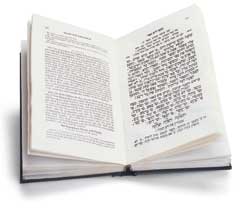
From that moment on, this date, henceforth known as the Day of Atonement, is annually observed as a commemoration of our special relationship with G‑d, a relationship that is strong enough to survive any rocky bumps it might encounter. This is a day when we connect with the very essence of our being, which remains faithful to G‑d regardless of our outward behavior.
And while it is the most solemn day of the year, we are also joyful, confident that G‑d will forgive our sins and seal our verdict for a year of life, health and happiness.
For nearly twenty-six hours-from several minutes before sunset on 9 Tishrei until after nightfall on 10 Tishrei-we "afflict our souls": we abstain from food and drink, do not wash or anoint our bodies, do not wear leather footwear, and abstain from spousal intimacy. We are likened to the angels, who have no physical needs. Instead of focusing on the physical, we spend much of our day in the synagogue, engaged in repentance and prayer.
Preparations
On the day before Yom Kippur, the primary mitzvah is to eat and drink in abundance. Two festive meals are eaten, one earlier in the day, and one just prior to the onset of Yom Kippur. Some of the day's other observances include requesting and receiving honey cake, in acknowledgement that we are all recipients in G‑d's world and in prayerful hope for a sweet year; begging forgiveness from anyone whom we may have wronged during the past year; giving extra charity; and the ceremonial blessing of the children.
Before sunset, women and girls light holiday candles, and everyone makes their way to the synagogue for the Kol Nidrei services.
On Yom Kippur
In the course of Yom Kippur we will hold five prayer services: 1) Maariv, with its solemn Kol Nidrei service, on the eve of Yom Kippur; 2) Shacharit-the morning prayer; 3) Musaf, which includes a detailed account of the Yom Kippur Temple service; 4) Minchah, which includes the reading of the Book of Jonah.
Finally, in the waning hours of the day, we reach the climax of the day: the fifth prayer, the Neilah ("locking") prayer. The gates of heaven, which were open all day, will now be closed-with us on the inside. During this prayer we have the ability to access the most essential level of our soul. The Holy Ark remains open throughout. The closing Neilah service climaxes in the resounding cries of "Hear O Israel . . . G‑d is one." Then joy erupts in song and dance (a Chabad custom is to sing the lively "Napoleon's March"), followed by a single blast of the shofar, and the proclamation, "Next year in Jerusalem."
After the fast we partake of a festive after-fast meal, making the evening after Yom Kippur a yom tov (festival) in its own right. We immediately begin to look forward to the next holiday and its special mitzvah: the construction of the sukkah.
Click here for more detailed Yom Kippur guides.
Overview of the Day before Yom Kippur's Observances
Preparations for Yom Kippur begin early in the morning with the kaparot (atonement) rite. This consists of waving a chicken over one's head and reciting a traditional text. The chicken is ritually slaughtered and given to charity. Click here for more about this ceremony.
On this day the primary mitzvah is to eat and drink in abundance. Two meals - festive affairs - are eaten, one earlier in the day, and one just prior to the onset of Yom Kippur. In many communities it is customary to eat kreplach - small dumplings filled with ground meat. Click here for more about the pre-Yom Kippur feasting.
In between the prayer services and preparing and eating the two meals, there is a lot to squeeze in:
- Yom Kippur erases all the sins we have committed "before G‑d"-but not the sins we may have committed against our fellow man. So we need to approach anyone whom we may have wronged and beg their forgiveness before Yom Kippur. Click here to read more about this.
- All immerse in a mikvah (ritual pool) on the day before Yom Kippur. See here for more information.
- At some point during the day it is customary to ask for and receive lekach (sweet cake). See here for the reasons behind this.
Minchah (the afternoon prayer service) is prayed relatively early to allow ample time to eat the final meal. Before Minchah, it is customary for all men to receive symbolic "lashes" as a humbling reminder to repent, as well as for everyone to give charity generously - a great source of merit. Click here for more about the afternoon prayer service and surrounding activities.
Then we partake of the final meal. One must stop eating prior to candle-lighting time. Immediately before the fast begins, it is customary for parents to bless their children. Click here for more about the final meal and the traditional text for blessing the children.
Then, 18 minutes before sunset, women and girls light candles, and the fast begins. Click here for more details.
A Step-by-Step Yom Kippur Guide

On Yom Kippur, the day when we are likened to angels, many have a custom to wear white clothing while praying. Married Ashkenazic men traditionally wear a simple, long white garment called a kittel. The kittel is also the traditional Jewish shroud; wearing it reminds us of our mortality and urges us to repent.
Before sunset (click here to for exact time in your location), women and girls light holiday candles, and everyone changes into non-leather shoes and holiday finery.
Kol Nidrei
On Yom Kippur, the tallit (prayer shawl) is worn for all the prayer services. In preparation for Kol Nidrei, the tallit should preferably be donned before sunset. (If donning the tallit after sunset, the traditional blessing is not recited.)
Ideally, Kol Nidrei should begin shortly before sunset. The Torah scrolls are all removed from the Ark-it is a great mitzvah to purchase the honor of holding the first Torah scroll-and the procession of scrolls moves towards the bimah (reading table) while everyone kisses and embraces the passing Torahs.
After requesting permission, from both the heavenly and earthly courts, to "pray with the transgressors," the cantor begins the Kol Nidrei. He chants the Kol Nidrei three times, each time on a slightly higher note. The congregation reads along with the cantor, in an undertone.
The Kol Nidrei is followed by a few brief verses and prayers and culminates with the Shehecheyanu blessing, in which we thank G‑d for "granting us life, sustaining us, and allowing us to reach this occasion." This blessing is recited in honor of every holiday, but usually following the night's kiddush. On Yom Kippur, because there is no kiddush, the blessing was incorporated as part of the prayers. Women and girls do not recite this blessing with the congregation-as they have already recited it after lighting the holiday candles.
In most congregations, at this point the rabbi delivers a sermon. In many congregations, this sermon is accompanied by an appeal-for charity has the power to evoke heavenly mercy.
The evening prayer service then commences.
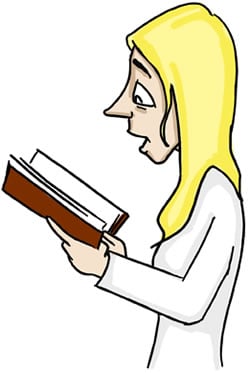
During Yom Kippur, every time we say the second verse of the Shema, the "Baruch Shem" verse-"Blessed is the Name of the glory of Your kingship forever and ever"-it is proclaimed out loud. Throughout the year, this blessing is recited in an undertone, as it was "stolen" from the angels. On Yom Kippur, however, we are likened to angels, so we too, like the angels, can recite it out loud.
The special Yom Kippur Amidah (standing prayer) incorporates a lengthy confession of sins. This confession is recited silently, and with each sin that we confess we lightly knock our chest-the domicile of the heart, the seat of our passions and impulses-with our fist. The confession is later repeated, after the Amidah, together with the entire congregation. This double confession is repeated during all the day's prayers, with the exception of the final Ne'ilah prayer.
The Amidah is followed by liturgy interspersed with the recitation of the verses (Exodus 34:6-7) that allude to G‑d's Thirteen Attributes of Compassion: "G‑d, G‑d, benevolent G‑d, compassionate and gracious, slow to anger and abounding in kindness and truth; He preserves kindness for two thousand generations, forgiving iniquity, transgression and sin, and He cleanses."
The entire Kol Nidrei and evening service should take approximately two hours.
Many have the custom to recite the entire Book of Psalms after the evening service.
Yom Kippur Morning and Early Afternoon
The joint morning and Musaf services occupy the bulk of the day (approximately six hours). The morning service pretty much follows the order of the traditional Shabbat and holiday service. The special Yom Kippur Amidah and confession is recited, followed again by songs and special Yom Kippur liturgy.
Two Torah scrolls are taken from the Ark, and from them we read about the special Yom Kippur service in the Holy Temple-may it soon be rebuilt. The haftorah discusses the concepts of repentance and fasting, the theme du jour of Yom Kippur.
In many communities, the aliyahs-whose supply doesn't meet the demand, due to the large crowd and the auspiciousness of the day-are auctioned off to the highest bidders, with the monies raised earmarked for a charitable cause.
The Torah reading is followed by the Yizkor service-traditionally preceded by the rabbi's homily. In the Yizkor prayer, we beseech G‑d to kindly remember the souls of our dear departed ones; traditionally, all those who do not recite Yizkor (i.e., those whose parents are both still alive) leave the synagogue for the duration of the brief prayer.
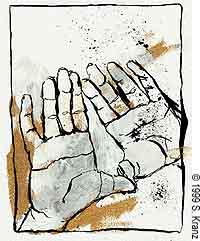
The Yizkor service is followed by the Musaf service. The most prominent feature of this is the Avodah, a rather lengthy and detailed recounting of the Yom Kippur service in the Holy Temple, whose highlight was the high priest's entry into the Holy of Holies. During the course of the Avodah, on three occasions we relate how the high priest would pronounce G‑d's ineffable name, and in response the assembled Jews would prostrate themselves on the ground. When reaching these passages, we too prostrate ourselves on our hands and knees.
The Avodah concludes with a series of prayers in which we beseech G‑d to restore the Temple service with the coming of Moshiach. We also recount the tragic story of the cold-blooded murder of the "Ten Martyrs" by the Roman regime.
Towards the end of the Musaf, the kohanim (priests) administer the priestly blessing.
In most synagogues, the Musaf prayer is followed by a break, lasting between one and three hours.
Late Afternoon
Minchah, the afternoon prayer, is called for one or one and a half hours before sunset.
The service commences with the Torah reading, which speaks of the purity of Jewish life and warns us not to engage in immoral practices. For the haftorah we read the entire Book of Jonah, which contains a timely message on the importance of repentance and prayer.
The Yom Kippur Amidah is then followed by a few brief prayers. The entire Minchah service lasts approximately one hour.
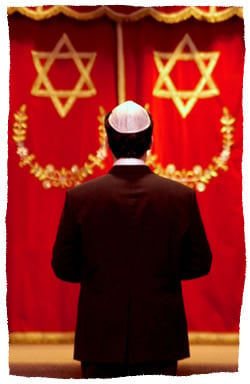
Now, moments before sunset, in the waning hours of Yom Kippur, we reach the climax of the holiest day of the year, and we recite the Ne'ilah prayer. Ne'ilah means "locking." The gates of Heaven, which were open all day, will now be closed-with us on the inside. During this prayer we have the ability to access the most essential level of our soul, the level that is in a state of absolute oneness with her Creator. The Holy Ark remains open for the duration of the entire prayer.
The Ne'ilah Amidah is somewhat abbreviated-it does not contain the lengthy version of the confession. The Amidah is followed by a selection of prayers, and culminates with the cantor emphatically proclaiming the words of the Shema-"Hear O Israel, the L‑rd is our G‑d, the L‑rd is one!" With intense concentration, the congregation repeats the verse. The cantor then recites the "Baruch Shem" verse three times, again followed by the congregation. Finally, with all his might the cantor proclaims seven times, "The L‑rd is G‑d!" and again, the congregation repeats after him. This is followed by the joyous proclamation, "Next Year in Jerusalem!"
The shofar (ram's horn) is then sounded-one triumphant, long blast, signifying the end of the holy day. In Chabad synagogues, the shofar blast is preceded by the euphoric singing of "Napoleon's March." At this point we are ecstatically confident that G‑d has sealed us all for a wonderful year: a year of happiness, prosperity, and health; the year when we will finally experience the long-awaited Redemption.
An Overview of Yom Kippur Laws
On Yom Kippur, the Torah instructs us to "afflict" ourselves, which means abstaining from an assortment of physical pleasures. There are two reasons for this: a) On this day, when our connection to G‑d is brought to the fore, we are compared to angels, who have no physical needs. b) We afflict ourselves to demonstrate the extent of our regret for our past misdeeds. (Click here for a more mystical explanation.)
Instead of focusing on the physical, the majority of the day is spent in the synagogue, devoted to repentance and prayer.
There are five areas of pleasure that we avoid on Yom Kippur-from sundown on the eve of the holiday until the following nightfall (click here to find out when Yom Kippur starts and ends in your location):
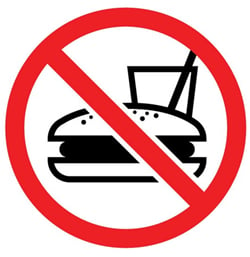
- Eating or drinking.
- Wearing leather footwear.
- Bathing or washing.
- Applying ointment, lotions, or creams.
- Engaging in any form of spousal intimacy.
(These all are restrictions unique to Yom Kippur; we also abstain from all creative activities forbidden on the Shabbat, e.g., turning on lights, driving, and carrying in the public domain.)
It is also customary not to wear gold jewelry on Yom Kippur, as gold is reminiscent of the sin of the Golden Calf, and on the Day of Atonement - the day when we were forgiven for that egregious sin - we do not want to "remind" the Prosecutor (Satan) of our past sins.
The Details
Fasting:
- All adults over bar or bat mitzvah fast, including pregnant or nursing women.
- Healthy children should be educated to fast for a short amount of time, starting from the age of nine. They shouldn't be given to eat after sundown on the eve of Yom Kippur, and their breakfast should be slightly delayed.
- Fasting on Yom Kippur is of utmost importance. This is true even if in order to fast a person must spend the entire day resting in bed, and will miss synagogue services.
- Someone who is ill, a woman who has recently given birth, an individual who needs to take medication, or a person of advanced age who feels it difficult to fast should consult with a rabbi.
Someone who upon a rabbi's instructions (based on the recommendation of a medical professional) needs to eat on Yom Kippur need not be dejected. The same G‑d who made it a mitzvah for healthy people to fast on Yom Kippur also commanded that preservation of life and health is even more important than fasting. The healthy person fulfills a mitzvah by fasting; the ill person does a mitzvah by eating.
An ancient High Holiday prayerbook suggests that an ill person recite the following prayer before eating on Yom Kippur:
Behold I am prepared to fulfill the mitzvah of eating and drinking on Yom Kippur, as You have written in Your Torah: "You shall observe My statutes and My ordinances, which a man shall do and live with them. I am G‑d." In the merit of fulfilling this mitzvah, seal [my fate], and [that of] all the ill of Your nation Israel, for a complete recovery. May I merit next Yom Kippur to once again fulfill [the mitzvah of] "you shall afflict yourselves [on Yom Kippur]." May this be Your will. Amen.
Click here for more information on this topic.
Leather Footwear:
We don't wear shoes or slippers if they contain any leather at all-whether in their uppers, in their soles or heels, or in an insert.
The prohibition applies to footwear only. Wearing a leather belt, kippah, or jacket presents no problem whatsoever.
Children, too, should be taught to wear non-leather footwear.
Washing and Bathing:
The prohibition against washing or bathing applies whether using hot or cold water, and even to washing only part of one's body. In the words of the Sages: "Even to insert a finger in cold water is forbidden."
Nevertheless, there are several exceptions to this rule. They are:
- It is permitted to wash hands upon exiting the lavatory.
- It is permitted to wash any area of the body that has become soiled.
- Upon awakening in the morning, one performs the ritual hand washing-but washes only until the knuckles.
- Before they administer the Priestly Blessing, the priests' hands are ritually washed in the normal fashion.
- It is permitted to wash one's hands before handling food.
- Someone who needs to bathe or wash for health reasons should consult a rabbi.
Useful Yom Kippur Links:
Yom Kippur Mega-Site
Global Yom Kippur Service Locator
Holiday Study & Insights
Yom Kippur Stories
High Holiday Shopping
Yom Kippur Kids' Zone
Yom Kippur Audio Classes, Videos & Songs
High Holidays E-Greeting Cards